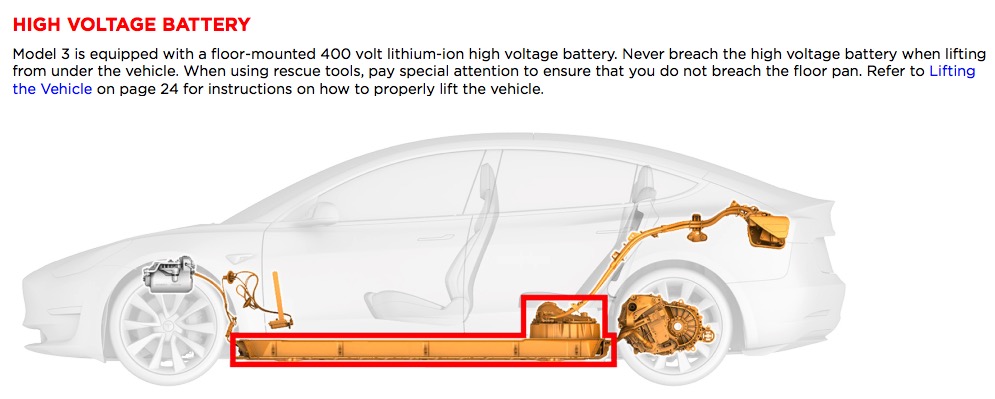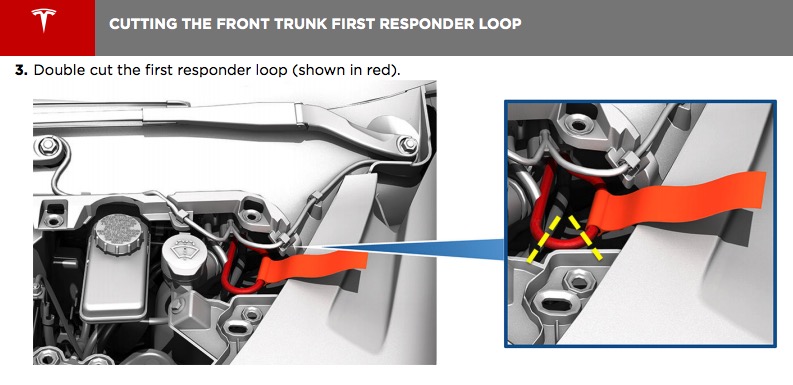Electric vehicles with lithium-ion batteries present a complex and hazardous situation for firefighters responding to a vehicle accident. If a conventional vehicle with gasoline or diesel catches fire after an accident it usually happens quickly and is very evident. When batteries in an electric car are damaged by debris on the road or a collision, a short circuit can occur in one or more of the thousands of cells, creating heat which may ignite the chemicals inside the battery. This can spread to the adjoining cells and lead to the condition known as “thermal runaway” in which the fire escalates.
Independent research and information for first responders produced by Tesla warn that a battery fire in an electric vehicle can take 3,000 gallons of water and up to 24 hours to fully suppress. Firefighters should immediately arrange for water tenders and use a master stream if possible. Consider allowing the battery to burn while protecting exposures. Breathing apparatus is absolutely required. In some cases firefighters have run out of air and had to get a second bottle.

If the fire appears to be out, a thermal imaging camera can help to identify any areas still burning or overheated. In one test a battery reignited the vehicle 22 hours later. Tesla recommends that after a fire their vehicles should be stored at least 50 feet away from any combustible material.
Their new Model 3 has two “cut loops” that firefighters can sever to shut down the high voltage system outside of the high voltage battery and disable the supplemental restraint system and airbag components.

Thanks and a tip of the hat go out to Bean.
Typos or errors, report them HERE.
